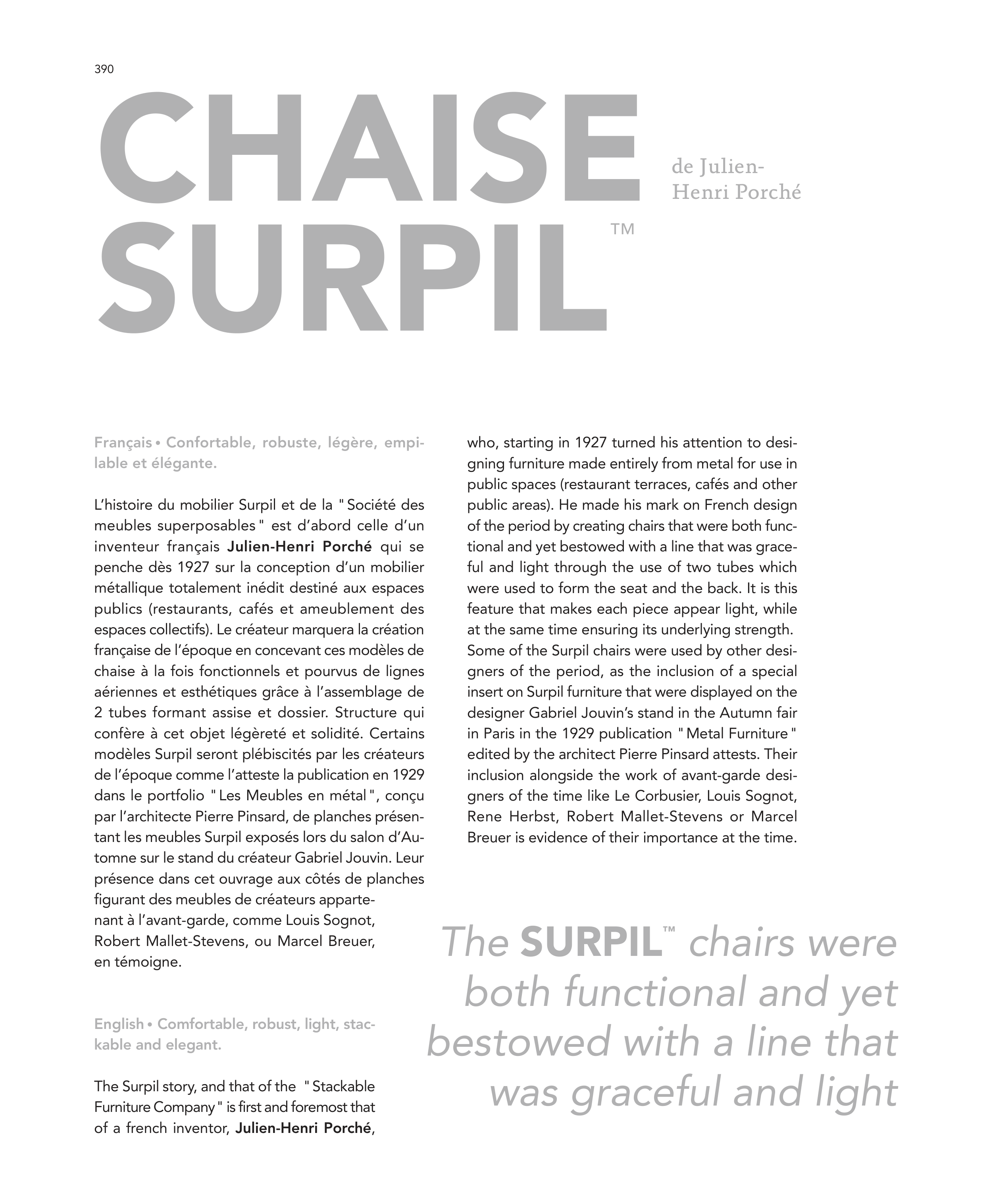de Julien-
Henri Porché
Français • Confortable, robuste, légère, empi-
lable et élégante.
L’histoire du mobilier Surpil et de la " Société des
meubles superposables " est d’abord celle d’un
inventeur français Julien-Henri Porché qui se
penche dès 1927 sur la conception d’un mobilier
métallique totalement inédit destiné aux espaces
publics (restaurants, cafés et ameublement des
espaces collectifs). Le créateur marquera la création
française de l’époque en concevant ces modèles de
chaise à la fois fonctionnels et pourvus de lignes
aériennes et esthétiques grâce à l’assemblage de
2 tubes formant assise et dossier. Structure qui
confère à cet objet légèreté et solidité. Certains
modèles Surpil seront plébiscités par les créateurs
de l’époque comme l’atteste la publication en 1929
dans le portfolio " Les Meubles en métal ", conçu
par l’architecte Pierre Pinsard, de planches présen-
tant les meubles Surpil exposés lors du salon d’Au-
tomne sur le stand du créateur Gabriel Jouvin. Leur
présence dans cet ouvrage aux côtés de planches
figurant des meubles de créateurs apparte-
nant à l’avant-garde, comme Louis Sognot,
Robert Mallet-Stevens, ou Marcel Breuer,
en témoigne.
English • Comfortable, robust, light, stac-
kable and elegant.
The Surpil story, and that of the " Stackable
Furniture Company " is first and foremost that
of a french inventor, Julien-Henri Porché,
who, starting in 1927 turned his attention to desi-
gning furniture made entirely from metal for use in
public spaces (restaurant terraces, cafés and other
public areas). He made his mark on French design
of the period by creating chairs that were both func-
tional and yet bestowed with a line that was grace-
ful and light through the use of two tubes which
were used to form the seat and the back. It is this
feature that makes each piece appear light, while
at the same time ensuring its underlying strength.
Some of the Surpil chairs were used by other desi-
gners of the period, as the inclusion of a special
insert on Surpil furniture that were displayed on the
designer Gabriel Jouvin’s stand in the Autumn fair
in Paris in the 1929 publication " Metal Furniture "
edited by the architect Pierre Pinsard attests. Their
inclusion alongside the work of avant-garde desi-
gners of the time like Le Corbusier, Louis Sognot,
Rene Herbst, Robert Mallet-Stevens or Marcel
Breuer is evidence of their importance at the time.
CHAISE
SURPIL
™
The SURPIL
™ chairs were
both functional and yet
bestowed with a line that
was graceful and light
390


